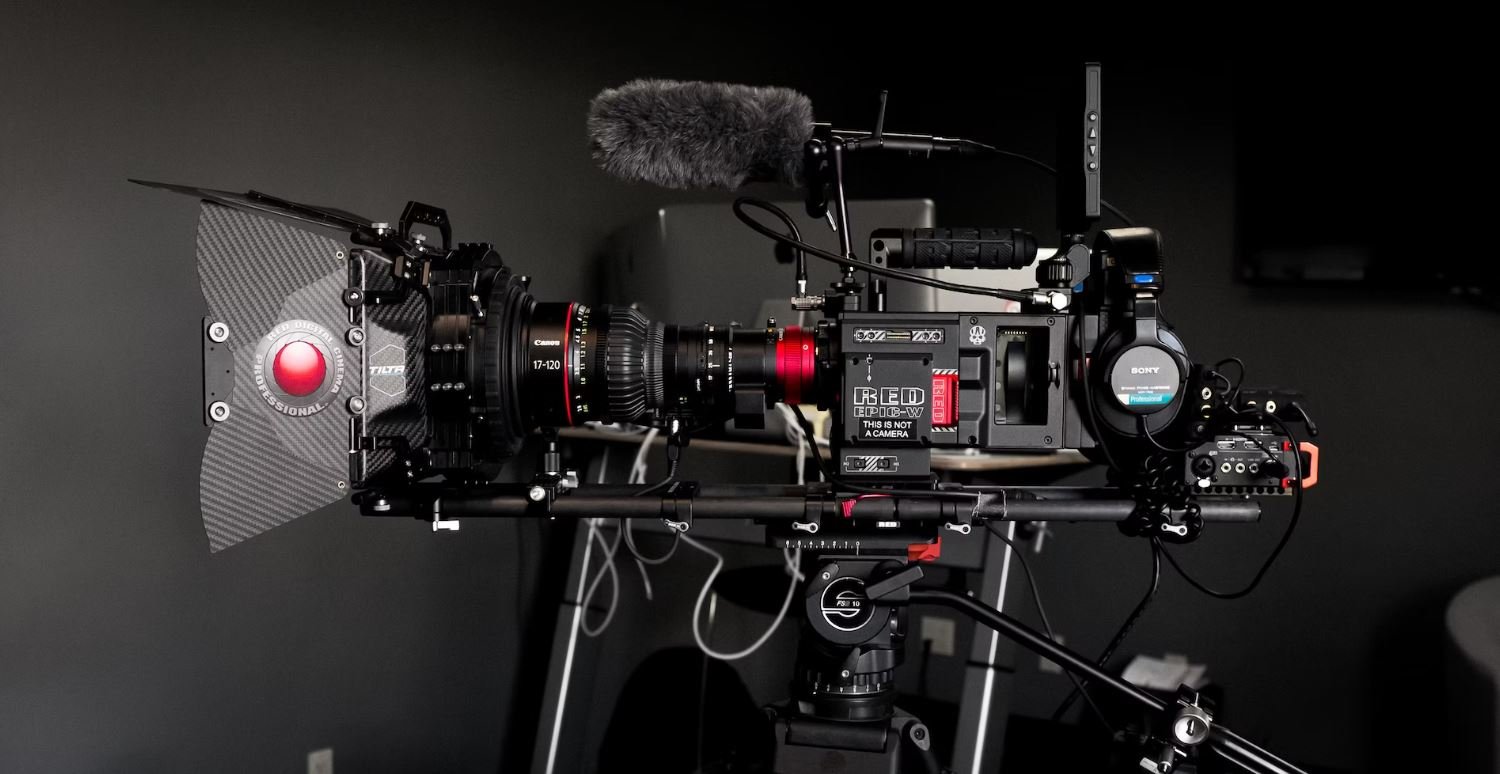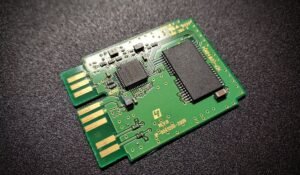How to Use AI Builder Models in Power Automate
In today’s digital landscape, the power of Artificial Intelligence (AI) is revolutionizing the way we automate business processes. With the introduction of AI Builder Models in Power Automate, organizations can leverage the capabilities of AI to streamline their workflows and make informed decisions. In this article, we will explore the steps involved in using AI Builder Models in Power Automate and discuss the benefits it offers to businesses.
Key Takeaways
- AI Builder Models in Power Automate allow businesses to integrate AI capabilities into their workflows.
- It provides a user-friendly interface and requires no coding knowledge.
- AI Builder Models can be trained on custom data to meet specific business requirements.
- The integration of AI in Power Automate helps automate repetitive tasks and enhance decision-making processes.
- Leveraging the power of AI can significantly improve operational efficiency and productivity.
Getting Started with AI Builder Models in Power Automate
To begin using AI Builder Models in Power Automate, you first need to create an AI model using the AI Builder service. This involves uploading and training your data to teach the model to recognize patterns and make predictions based on the provided inputs. Once the model is trained, you can integrate it into your Power Automate workflows to automate processes and extract valuable insights.
*AI Builder Models in Power Automate provide a wide range of pre-built models, but you can also create custom models tailored to your specific business needs.*
Step-by-Step Guide to Using AI Builder Models in Power Automate
- Create an AI model in AI Builder using the Power Platform.
- Train your model using the data to ensure accurate predictions.
- In Power Automate, create a new flow or open an existing one.
- Add the AI Builder action to your flow and select the desired model.
- Configure the inputs and outputs of the AI Builder action.
- Use the predictions from the AI model in subsequent steps of your flow to automate tasks or make decisions.
Benefits of Using AI Builder Models in Power Automate
Integrating AI Builder Models in Power Automate offers numerous benefits to businesses seeking to optimize their workflows and enhance decision-making. Let’s explore some of these advantages:
- Automation of repetitive and time-consuming tasks.
- Improved accuracy and reliability of predictions and decisions.
- Enhanced operational efficiency and productivity.
- Seamless integration with existing Power Automate workflows.
- Flexible customization options to meet specific business requirements.
Example Use Cases for AI Builder Models in Power Automate
The versatility of AI Builder Models in Power Automate allows for a wide range of applications across various industries. Here are some example use cases:
| Industry | Use Case |
|---|---|
| Retail | Automated inventory management and restocking based on demand predictions. |
| Finance | Automatic fraud detection in transaction data to prevent financial losses. |
| Healthcare | Identification of potential disease risks based on patient data. |
Conclusion
AI Builder Models in Power Automate are a game-changer for businesses looking to leverage AI capabilities to automate processes and improve decision-making. By following the step-by-step guide and exploring the provided benefits and use cases, organizations can unlock the full potential of AI to drive growth and efficiency. Embracing AI technology is key to staying competitive in today’s fast-paced business environment.

Common Misconceptions
Misconception 1: AI Builder Models can replace human intelligence
One common misconception about AI Builder Models in Power Automate is that they can completely replace human intelligence. However, this is not true. While AI models are capable of automating certain tasks and making predictions based on patterns, they are still limited to the data they have been trained on. They lack the ability to possess human-like instincts, creative thinking, and empathy.
- AI models can only make predictions based on existing data and patterns.
- They cannot think critically or make complex decisions like humans.
- AI models lack emotional intelligence and empathy.
Misconception 2: AI Builder Models are always accurate
Another misconception is that AI Builder Models are always accurate in their predictions. However, like any other machine learning models, AI models have their limitations. They are highly dependent on the quality and quantity of data used for training. If the training data is biased or incomplete, the model’s predictions may be inaccurate or unreliable.
- AI models can be influenced by biased or incomplete training data.
- They can produce inaccurate predictions if the data used for training is flawed.
- The accuracy of AI models is directly influenced by the quality and quantity of training data.
Misconception 3: AI Builder Models require minimal human involvement
Some people believe that AI Builder Models require minimal human involvement. While AI can automate certain tasks, it still requires human intervention to train and fine-tune the models. Training data needs to be preprocessed, features need to be selected, and the model needs to be evaluated and optimized for better performance. Additionally, ongoing monitoring and maintenance are necessary to ensure the model remains accurate and up-to-date.
- AI models need human involvement for data preprocessing and feature selection.
- Models require evaluation and optimization for better performance.
- Ongoing monitoring and maintenance are required to keep models accurate and up-to-date.
Misconception 4: AI Builder Models are only applicable to technical experts
Contrary to popular belief, AI Builder Models are not solely applicable to technical experts. Power Automate’s AI Builder provides a user-friendly interface that allows even non-technical users to build and deploy AI models. The platform offers pre-built templates and intuitive tools that make it accessible to a wider range of users with various levels of technical expertise.
- AI Builder Models can be used by both technical and non-technical users.
- Power Automate’s user-friendly interface makes it accessible to a wider range of users.
- Pre-built templates and intuitive tools simplify the process for non-technical users.
Misconception 5: AI Builder Models are expensive to implement
Many people assume that implementing AI Builder Models in Power Automate is costly. While there may be costs associated with data storage, training, and maintenance, AI Builder offers different pricing options to cater to different user needs and budgets. Moreover, the time saved and the potential efficiency gains from using AI models can offset the initial investment.
- AI Builder offers different pricing options to cater to various budgets.
- While there may be initial investment costs, the potential efficiency gains can outweigh them.
- Costs associated with data storage, training, and maintenance should be considered but can be managed effectively.

Introduction
In this article, we will explore the various AI Builder models that can be used in Power Automate, empowering users to harness the power of artificial intelligence in their automation workflows. Each table below provides key information about a specific AI Builder model, highlighting its capabilities and use cases.
Sentiment Analysis Model
With the Sentiment Analysis model, you can determine the sentiment of a given text, whether it is positive, negative, or neutral. This model is particularly useful for analyzing customer feedback, social media sentiment, and brand perception.
Entity Extraction Model
The Entity Extraction model allows you to identify entities within a text, such as names, dates, locations, or product names. By extracting these entities, you can automate processes like tagging, categorization, and information extraction.
Form Processing Model
Automate processing of structured documents, such as invoices, receipts, and forms. The Form Processing model can extract key data fields from these documents, enabling end-to-end automation of document processing tasks.
Language Detection Model
By utilizing the Language Detection model, you can automatically identify the language of a given text. This feature is particularly useful in multilingual environments for routing content, translating text, or providing language-specific response if required.
Text Recognition Model
The Text Recognition model enables you to extract text from images, scanned documents, or PDF files. This can be beneficial for automating data entry tasks, extracting insights from images, or digitizing physical documents quickly.
Category Classification Model
Automatically classify text into predefined categories using the Category Classification model. This model is valuable for automating content categorization, classifying support tickets, or routing emails to the appropriate department.
Anomaly Detection Model
Identify anomalies or outliers within a given dataset using the Anomaly Detection model. This can be applied to various domains, such as fraud detection, predictive maintenance, or quality control.
Object Detection Model
The Object Detection model allows you to detect and identify objects within images. This can be useful in various scenarios, including inventory management, safety monitoring, or visual quality control.
Text Translation Model
Translate text from one language to another using the Text Translation model. This feature is handy for automating multilingual communication, translating user-generated content, or enabling language support in applications.
Key Phrase Extraction Model
Extract key phrases from a given text using the Key Phrase Extraction model. This can help you gain insights from large volumes of text, automate content summarization, or identify the most relevant topics in a document.
Article Conclusion
In this article, we explored various AI Builder models available in Power Automate. From sentiment analysis and entity extraction to form processing and anomaly detection, these AI models offer powerful automation capabilities by leveraging artificial intelligence. By incorporating these models into your automation workflows, you can enhance efficiency and gain valuable insights from your data. Start leveraging the power of AI in your automation journey today!
How to Use AI Builder Models in Power Automate
Frequently Asked Questions
What is AI Builder?
AI Builder is a Microsoft Power Platform service that allows users to build and deploy artificial intelligence models without coding skills. It enables users to automate processes and make predictions using AI technologies.
How do I access AI Builder in Power Automate?
To access AI Builder in Power Automate, you need to have a valid Office 365 or Dynamics 365 license. Once you have the license, you can navigate to Power Automate and create or edit a flow. AI Builder features will be available under the “AI Builder” tab in the flow designer interface.
Can I use my own AI models in Power Automate?
Yes, AI Builder allows you to use your own AI models in Power Automate. You can upload your trained models or use the prebuilt models offered by AI Builder. These models can be used within flows to extract data, automate tasks, or make predictions.
What types of AI models are supported in Power Automate?
Power Automate supports various types of AI models, including form processing, object detection, prediction, and text classification. Each model type is designed to solve specific business problems, such as extracting data from forms, detecting objects in images, predicting outcomes, or classifying text.
How can I train my own AI models in AI Builder?
You can train your own AI models in AI Builder by using the AI model creation wizard. This wizard allows you to provide sample data and labels, select the model type, and train the model using the Power Automate AI Builder interface. You can also fine-tune the model to improve its accuracy.
Is coding required to use AI Builder models in Power Automate?
No, coding is not required to use AI Builder models in Power Automate. The AI Builder interface provides a visual designer that allows users to configure and utilize AI models in their flows using a low-code approach. However, some advanced use cases may require the use of custom code or integrations with other services.
Can I integrate AI Builder models with other Power Platform services?
Yes, AI Builder models can be integrated with other Power Platform services such as Power Apps and Power BI. You can use the AI models within Power Apps to create intelligent user interfaces or within Power BI to generate AI-based insights and visualizations.
Is there a cost associated with using AI Builder models in Power Automate?
Yes, there is a cost associated with using AI Builder models in Power Automate. AI Builder offers different pricing plans based on the number of AI model inferences or predictions used in a given month. You can refer to the Microsoft pricing documentation for more details on the pricing structure.
What are the limitations of using AI Builder models in Power Automate?
While AI Builder provides a powerful toolset for building AI models, there are certain limitations to be aware of. These limitations include the maximum number of records that can be processed in batch operations, the maximum size of input files, and the performance limitations of certain model types. It’s recommended to review the documentation for specific limitations and guidelines.
Where can I find more resources and documentation on using AI Builder models in Power Automate?
You can find more resources and documentation on using AI Builder models in Power Automate on the Microsoft Power Platform website. The website offers guides, tutorials, and sample flows that can help you get started with AI Builder and explore its capabilities.





